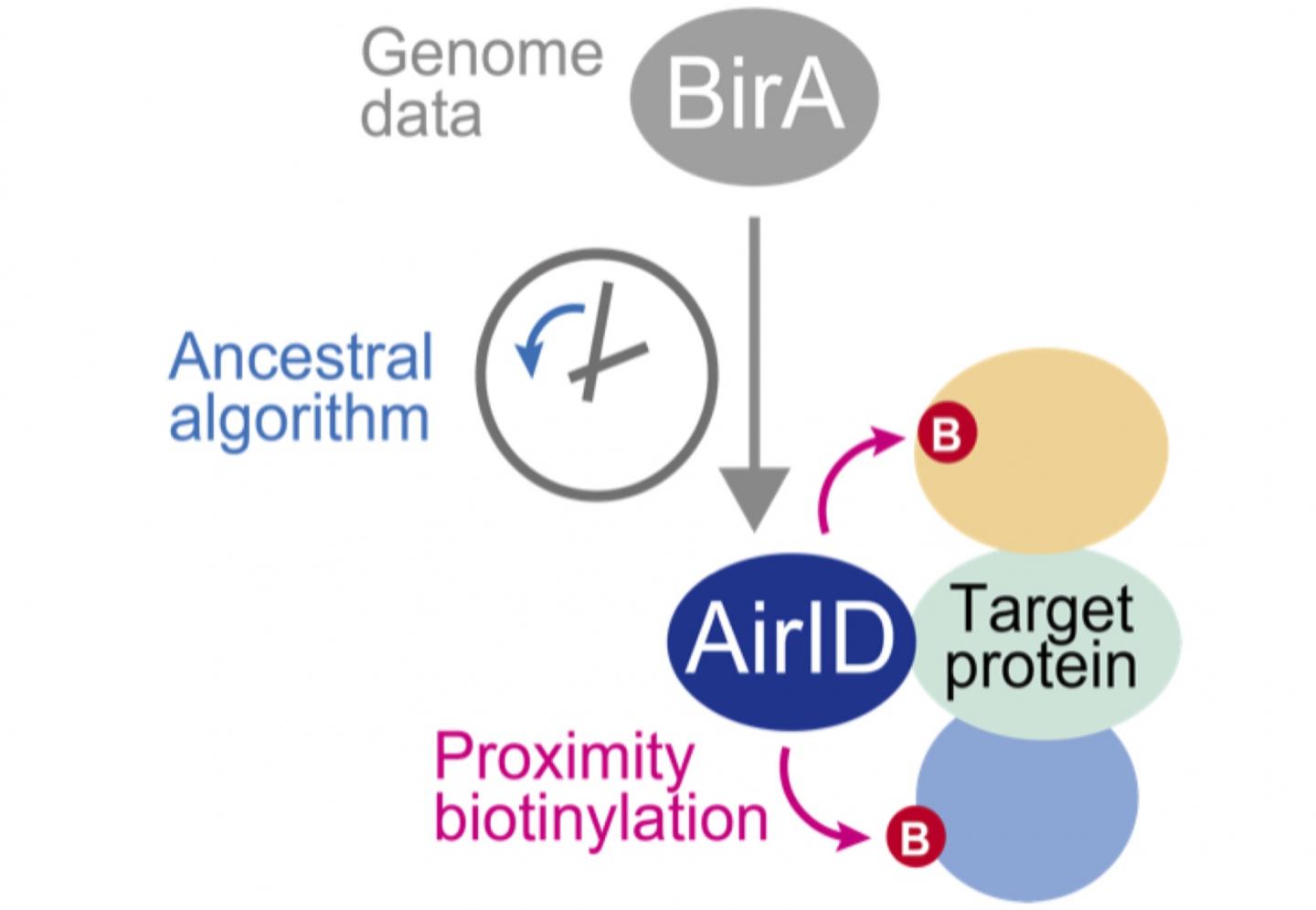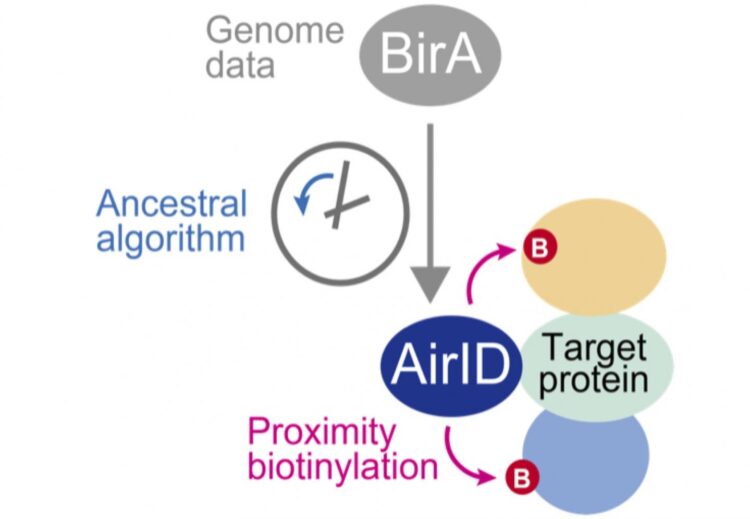AirID enables comprehensive analysis of interaction partners of your target proteins in cells

Credit: Tatsuya Sawasaki (Ehime University)
Proteins control many physiological functions that are essential for living things in vivo. There are over 20,000 types of proteins in humans, and each protein plays a different role by interacting with other proteins. Proximity-dependent biotin identification (BioID) technology is a technique for finding these interacting partner proteins. BioID can be used by expressing the BioID-fusion protein and adding biotin. In cells expressing BioID-fusion bait protein, proteins with which the bait protein interacts are biotinylated and can be comprehensively analyzed using precipitation with streptavidin followed by mass spectrometry.
Three types of BioID enzymes (BioID, BioID2, TurboID) have been developed so far. However, BioID and BioID2 require a long reaction time and TurboID also biotinylates non-interacting proteins. Further improvement of biotinylation enzymes is an important goal for enhancing the convenience of proximity biotinylation in cells.
In this research, we designed ancestral biotinylation enzymes using an ancestral enzyme reconstruction algorithm and metagenome data. The new enzyme, AirID (ancestral BirA for proximity-dependent biotin identification) showed higher activity, higher specificity, and less toxicity than the previous three types. AirID was applied in the evaluation of protein interaction inhibitors, analyzing complexes formed by three or more types of proteins, and analyzing interactions through compounds called Molecular Glue. In addition, we have succeeded in the comprehensive identification of proteins that interact with a target protein by identifying biotinylated proteins using mass spectrometry analysis in cultured cells which express the target protein fused with AirID. These results indicate that AirID is a suitable enzyme for analyzing comprehensive protein-protein interactions in cells.
###
Media Contact
Public Relations Division
[email protected]
Related Journal Article
http://dx.





